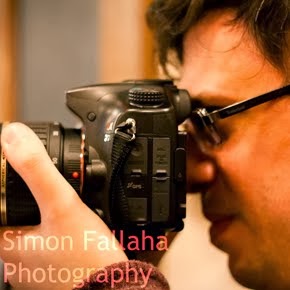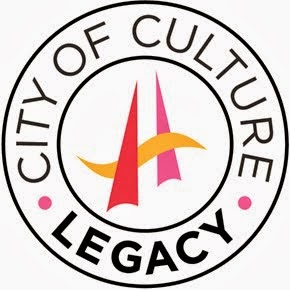An exquisite, quietly uplifting melodic and narrative concoction makes its debut in Derry-Londonderry
Columba Canticles originates from a series of poems written by Derry-Londonderry writer Sam Burnside. The poet and founder of the Verbal Arts Centre is one of many present at St. Columb's Cathedral tonight to witness the world premiere of an oratorio based on his own work, composed by Laurence Roman of the University Of Ulster.
Hopes are high that said oratorio, coupled with a quartet of pieces from Michael McGlynn and Paul Mealor, the latter of whom is also present, will both raise and illustrate the possibilities and potential of the human spirit.
But what of the music itself? Well, I am told, when I sit down, a little weary post-Return Of Colmcille, that I am about to hear a very good choir. So good that the BBC have taken note - the Songs Of Praise production team is in place to prepare for a broadcast due to be aired on September 15.
The Southbank Sinfonia, our orchestra for the evening, sit stationed at the back of the cathedral, almost entirely hidden from view. Then, from the lightness comes dark. From the noise, silence. And from the silence arises a softly, sweetly echoing alto-soprano voice. While the multitude of attendees continue to fixate their eyes at the front of the hall, something extremely entrancing is happening both behind and beside them; the sight of the Universities of Ulster and Aberdeen Chamber Choirs slowly moving forward to take their place at the front, with candles in hand, in tandem with the sound of Michael McGlynn's Jerusalem (listen to an extract below).
Not to be confused with the song that should be England's national anthem, this Jerusalem is a work of heart-rending, almost jaw-dropping beauty. An exquisite solo followed by a multitudinous vocal workout, it is a multi-layered Celtic chorus that gives one the breathtaking feeling of surveying an Irish or Scottish landscape and marvelling at the space around you.
It's followed by the ethereal Quis Quis Eris, also composed by McGlynn, a tune that's so understated that the audience do not believe they are expected to applaud. Hence conductor Shaun Ryan must turn to face us, crouch down and hold his hand to his ear so they get the signal.
Two large crescendos eventually lead into Paul Mealor's positively unifying Ubi Caritas, which relaxes both choirs, freeing them to express themselves. It's a well balanced piece featuring extremely prominent basses and a gentle alto solo.
When it's time for Mealor's next piece, Ryan announces that he loves the composer's work so much that he will get the best note he can out of it. And to an extent, he's right. Ave Maria is an epic welcome into comfortable and peaceful surroundings with shining soprano parts. The applause is long and loud, and Mealor is invited to share it.
The Southbank Sinfonia then join the choirs, beginning the Columba Canticles themselves with a smooth medley of string instruments. It is feared that the basses will be drowned out amidst the numerous weaving melodies of Kyrie, but an easily detectable long note shows that both the choir, and the violinists, mean business. This continues into the Requiem-esque (that's Mozart, not Fauré) Vestry, which is our first encounter with both Burnside's poetry and narrator Dessie Gallagher. Through focusing on tiny, clinical details such as a washbasin with a solitary cold tap, Burnside and Gallagher attempt to create imagery in line with Laurence Roman's music. It's an admirable idea, but does not come off so well amidst the acoustics of the cathedral, which lend themselves better to the music.
Both choir and musicians retain their prominence in Gloria In Excelsis, a ground bass solo which stretches from the singers to the double bass instruments. It's a very even-handed composition, a roundabout of harmonies circling eight descending notes over and over again.
The Chapter House exhibits Roman's best use of Burnside's poetry, creating a balanced commentary on the nature of humanity over centuries. Here, Gallagher evokes "a dark lawn where sheepish stars follow a grazing moon" and the choirs join in, enunciating a travelogue of locations from Enniskillen to Hiroshima. It is clear here, more than on any other piece, that Gallagher's narration is remote, distant from the choirs, who seem to exist as a decor for Burnside's storytelling. They are a soundtrack to a fractured odyssey.
After such heaviness, the jig-like nature of The Nave, which owes much to Irish traditional airs - particularly "She Moved Through The Fair" - is extremely welcome. Although it must be said that having two narrators on stage - one male, one female - leaves the very character of the piece very much at odds with itself. A tougher workout for the choirs, but more impressive, is The Bell Tower, a truncated but complex collection of overtones that you wish lasted longer than it did. The same is true of the equally short, but remarkably catchy Sanctus.
Contrary to its gentle title and nature - it incorporates the work of famed local composer Frances "All Things Bright And Beautiful" Alexander - Sunday School is rather startling. The choirs recite the Greek alphabet with extremely blunt clarity while both Gallagher's narration and the strings fill themselves with an accelerated aggression. It's something to remember, as is the beautifully low-key solo from Sophie Shiels in Agnus Dei, which concludes the evening.
One cannot doubt that the time passes swiftly, the quality of musicianship is stellar and there is never a dull moment, even if Burnside's work doesn't assert itself as well as it could amidst Roman's compositions. Perhaps different acoustics would be kinder to both Burnside and the narrator. Or perhaps, to quote Leos Janacek from Brian Friel's Performances, "you learn so much more just by listening to the music".















0 comments:
Post a Comment